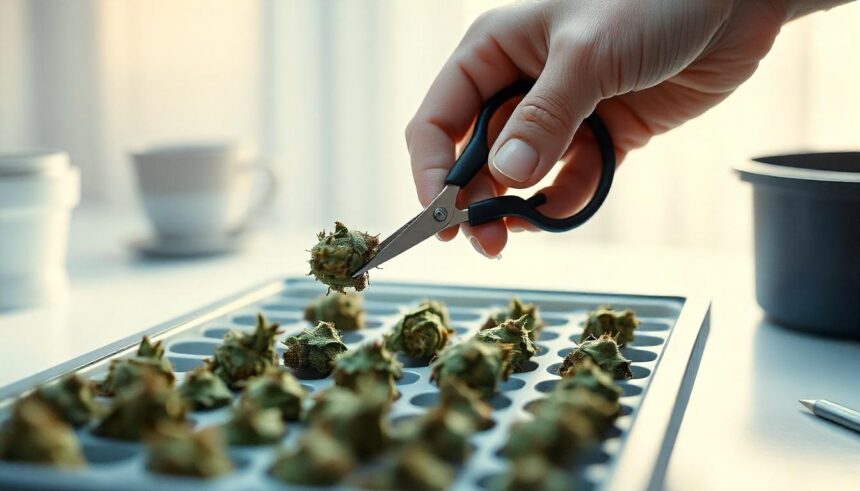Introduction to Growing Weed
Growing weed at home has become an exciting venture for many enthusiasts. Whether you’re looking to cultivate your own medicinal stash or simply enjoy the process of nurturing plants, there’s something incredibly satisfying about watching a seed transform into a flourishing cannabis plant. But before you dive in, it’s essential to understand what goes into this rewarding journey.
From selecting the perfect strain that suits your needs to setting up a growing space that supports healthy growth, each step is crucial. The world of cannabis cultivation offers endless possibilities and benefits when approached with care and knowledge. Ready to get started? Let’s explore how you can successfully grow weed right in your backyard or living room!
Understanding the Legalities and Regulations
Growing weed can be an exciting venture, but understanding the legal landscape is crucial. Laws vary significantly from one region to another. Some places have legalized recreational use, while others only permit medical marijuana.
Before you plant your seeds, research local regulations thoroughly. Are there limits on how many plants you can grow? Is a license required? Knowing these details will save you potential legal headaches down the line.
Keep in mind that even if cannabis is legal in your area, zoning laws might restrict where you can cultivate it. Be sure to check any homeowner association rules if applicable.
Staying informed about changes in legislation is equally important. The cannabis industry evolves rapidly and what’s permissible today may change tomorrow. Always err on the side of caution and stay compliant with local laws to enjoy your growing experience without worries.
Choosing the Right Strain for Your Needs
Selecting the right strain of weed is crucial for a successful grow. Different strains offer varying effects, growth patterns, and flavors.
Consider what you want from your cannabis experience. Are you looking for relaxation or creativity? Indicas are typically calming, while sativas can boost energy and focus.
Hybrid strains combine both properties. Experimenting with hybrids can lead to discovering unique effects tailored to your preferences.
Next, think about your growing environment. Some strains flourish indoors with controlled conditions; others thrive outdoors under natural sunlight. Researching each strain’s growth requirements will streamline the process.
Don’t forget about THC and CBD levels. Higher THC content may provide stronger psychoactive effects, whereas CBD strains cater to those seeking therapeutic benefits without significant intoxication.
Consult local growers or online forums for insights on popular regional strains that perform well in specific climates or setups. Making an informed choice will elevate your home-growing journey significantly.
Setting Up Your Growing Space
Creating the right environment is crucial for growing weed successfully. Start by choosing a location that offers privacy and control over light exposure. A spare room, closet, or even a grow tent can work well.
Ensure your space maintains optimal temperature and humidity levels. Cannabis thrives in temperatures between 70-85°F (20-30°C) during the day. Use fans to circulate air and prevent mold growth.
Lighting is another key factor. Depending on your setup, consider LED lights or HPS lamps to mimic natural sunlight. Position them at an appropriate distance from plants to avoid burning.
Don’t forget about ventilation! Fresh air helps plants breathe and reduces heat buildup, promoting healthier growth.
Invest in sturdy shelving or tables for organization—keeping everything tidy will make maintenance easier as you progress through the growing process.
Essential Equipment and Supplies
To grow weed successfully, you need the right equipment. Start with quality seeds or clones from a reputable source. Healthy genetics lay the foundation for your garden.
Lighting is crucial. Depending on your setup, consider LED grow lights or high-intensity discharge lamps. Both provide adequate light during different growth stages.
Temperature and humidity control are essential too. Invest in an accurate thermometer and hygrometer to monitor conditions carefully. A fan can help circulate air and maintain freshness.
Watering systems vary based on preference; options include hand-watering or drip irrigation setups. Ensure you have proper containers that allow good drainage.
Nutrients come next; choose fertilizers designed specifically for cannabis plants to promote healthy growth at every stage of development.
Don’t overlook soil quality—opt for organic potting mix loaded with beneficial microorganisms to give your plants a great start.
The Growing Process: From Seed to Harvest
Growing weed is an exciting journey that begins with choosing high-quality seeds. Start by germinating your seeds in a damp paper towel, ensuring they’re warm and dark to encourage sprouting.
Once the seedlings emerge, transfer them into small pots filled with nutrient-rich soil. Provide plenty of light and keep the environment stable for optimal growth.
As plants mature, switch to larger containers to give roots space to expand. Monitor water levels carefully; too much or too little can hinder development.
During the vegetative stage, prune excess leaves and branches for better airflow and light penetration. This promotes healthier growth and prepares plants for flowering.
When buds begin to form, focus on maintaining humidity levels while providing adequate nutrients tailored for this phase. Patience is key during these weeks as you watch your hard work come to life.
Eventually, the trichomes will change color—this signals it’s time for harvest!
Common Mistakes to Avoid
Growing weed can be a rewarding endeavor, but many newcomers stumble along the way. One common mistake is overwatering. It’s easy to think that more water equals better growth, but cannabis plants thrive in well-draining soil and don’t like “wet feet.”
Another pitfall is neglecting light requirements. Different strains have varying needs for sunlight or artificial light. Make sure your plants receive adequate exposure to promote healthy growth.
Overlooking pest management can lead to disaster. Regularly inspect your plants for signs of pests or diseases and take action quickly if you spot any issues.
Patience is key. Rushing the drying and curing process compromises flavor and potency. Allow your buds the time they need to develop fully before enjoying them.
Tips for Maximizing Your Yield
To maximize your yield, start with the right genetics. Choose high-yielding strains that suit your growing environment and personal preferences.
Optimal lighting is crucial. Invest in quality grow lights that mimic natural sunlight. Adjust their height as plants grow to ensure even light distribution.
Nutrients play a huge role too. Use balanced fertilizers during different growth stages. Monitor pH levels regularly for healthy nutrient absorption.
Pruning is beneficial as well. Trim away excess foliage to improve airflow and focus energy on bud production.
Consider implementing training techniques like topping or low-stress training (LST). These methods help shape your plants for better light exposure, leading to larger yields.
Don’t underestimate the power of proper watering practices either; overwatering can stunt growth while under-watering can stress plants out significantly.
Maintain optimal temperatures and humidity levels throughout the cycle, promoting an ideal growing environment for robust plants.
Harvesting and Storing Your Crop
Harvesting your weed is a crucial moment in the growing process. Timing is key; you want to pick your plants when the trichomes change from clear to cloudy or amber. This signals peak potency and flavor.
When it’s time, use sharp scissors or pruning shears for clean cuts. Be gentle with the buds to avoid damaging them. Hanging them upside down in a cool, dark place helps maintain their quality during drying.
Once dried, it’s vital to cure your cannabis properly. Place the buds in airtight jars and open them daily for fresh air circulation—this enhances aroma and smoothens out harshness.
For storage, keep your cured buds away from light and heat in glass containers or vacuum-sealed bags. A cool environment preserves potency over time, allowing you to enjoy your homegrown treasure long after harvest day arrives.
Conclusion: The Joy and Benefits of Homegrown Weed
Growing your own weed can be a rewarding experience. It provides a sense of accomplishment and satisfaction that comes from nurturing a plant from seed to harvest. The process allows for creativity in choosing strains, managing growth conditions, and developing unique techniques tailored to your preferences.
Homegrown weed also offers significant benefits. You have complete control over the cultivation process, ensuring that you use organic methods if desired and avoiding harmful pesticides or chemicals. This not only enhances the quality of your product but also contributes to better health for both you and the environment.
Moreover, cultivating cannabis at home fosters mindfulness and patience as you witness each stage of growth. It’s an opportunity to connect with nature while learning about botany and horticulture along the way.
Sharing your fresh crop with friends or using it for personal enjoyment creates memorable experiences that are hard to replicate through commercial means. The joy derived from harvesting something you’ve nurtured is truly unparalleled.
Whether you’re looking for relaxation, relief from pain, or simply exploring new hobbies, growing weed opens up countless possibilities. Embrace this journey; it may surprise you just how fulfilling it can be!







